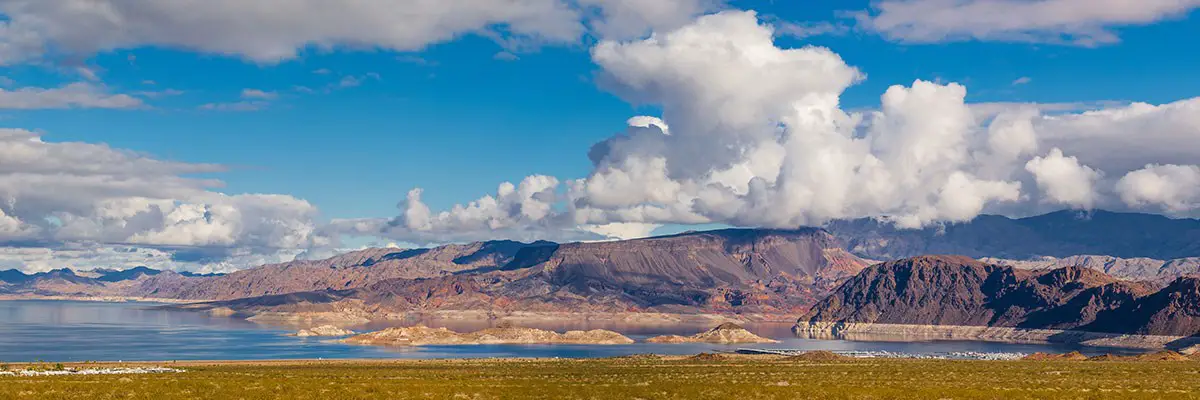Lake Mead is arguably the most important reservoir in the United States because of its size and user population. Managing this resource presents a variety of challenges because of its size and complexity. What is the Lake Mead Watershed?
The Lake Mead Watershed is the area draining into Lake Mead, formed by the Hoover Dam on the Colorado River. It spans multiple states, including Colorado, Wyoming, Utah, New Mexico, and Arizona, serving as a critical water source for the southwestern U.S. Crucial for agriculture and urban use, its conservation is essential.
There is a 50 percent chance Lake Mead, a key source of water for millions of people in the southwestern United States, will be dry by 2021 if climate changes as expected and future water usage is not curtailed, according to a pair of researchers at Scripps Institution of Oceanography, UC San Diego.
Introduction:
Once a bastion of aquatic abundance, Lake Mead’s receding shores tell a foreboding tale of scarcity as the Colorado River Basin endures an epochal drought. In this exposé, we traverse the parched watershed, unraveling the intricate web of environmental, societal, and economic repercussions wrought by the water shortfall. Join us on a journey through the lifeblood of the Southwest, where the rippling effects of the lake mead water level echo far beyond the visibly dwindling reservoir.
Lake Mead Watershed
Spanning the arid expanses of the American Southwest, Lake Mead, a reservoir held back by the engineering marvel known as Hoover Dam, faces a water crisis of historic proportions. This vast lake, once brimming, has witnessed its azure splendor recede, unveiling a parched, ringed basin symptomatic of a water shortage that ripples through the lifeblood of the surrounding river basin— the venerable Colorado River.
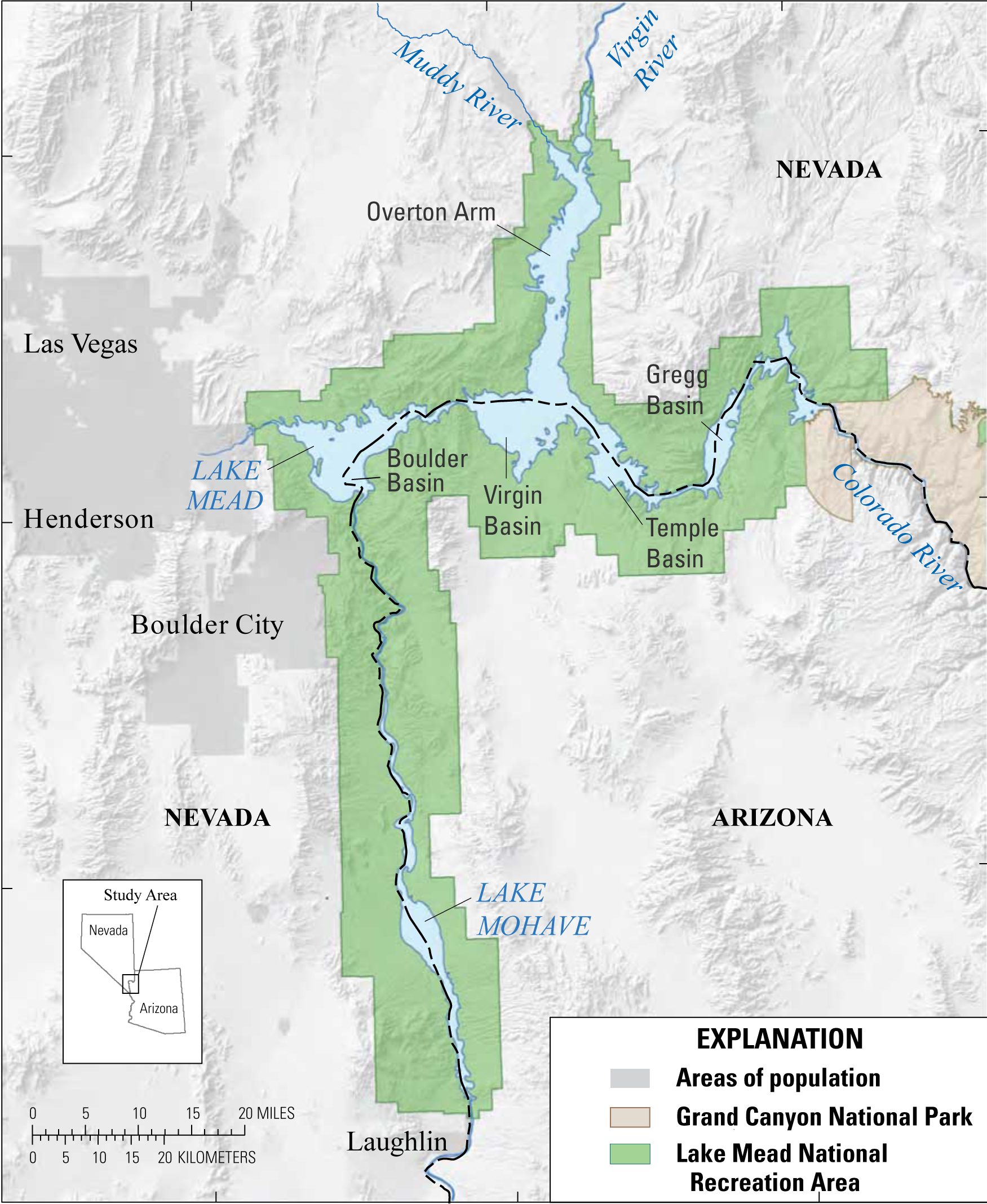
It’s where Vegas sates its thirst, Hoover Dam its power, and river water the lifeline for millions. However, as the reservoir’s levels plunge to new depths, a formal water shortage declaration echoes through the canyons, a testament to the burdens shouldered by water management teams.
Las Vegas has long gambled with nature, drawing copiously from Lake Mead’s seemingly inexhaustible well. But as the reservoir struggles, so too does Vegas, along with the broader river basin, confronting a harsh new reality where water quality and quantity must be meticulously balanced.
The water shortage isn’t a specter of a distant future; it’s an immediate challenge, necessitating a collaborative resurgence in sustainable water management. The Hoover Dam, majestic as ever, still churns out power, but the anxiety churns stronger beneath the surface, as stakeholders assess the watershed impact, knowing full well that every drop of river water is precious.
It’s not only about Vegas or the Hoover Dam but encompasses a multitude of communities and ecosystems within the river basin that depend on Lake Mead’s generosity. From the indigenous fauna to the delicate water quality, from the remote homesteader to the bustling urban center, they all converge at the water’s edge, seeking reprieve from the water shortage.
Lake Mead’s tale is not just one of crunching numbers but of tells the story of the competition between nature and civilization, where each mead-filled vision of the past must now adapt to a stringent future—a future where every dam, every policy, and every conservation effort counts.
The converging forces of climate change, burgeoning populations, and upstream demands have turned Lake Mead into a reservoir besieged on all sides.
The water management teams that steward Hoover Dam and the broader river basin and Lake Mead Watershed and Reservoir recognize the critical situation their in.
Lake Mead’s water shortage is a call to rethink our relationship with the lake, the river water, and our collective fate within this watershed. As reservoir levels tenuously hover, so does the balance of water quality and life in the arid Southwest, with the mirror-like surfaces of lakes reflecting the urgency of now and the scarcity that threatens to redefine an entire region.
In summary, Lake Mead’s water shortage isn’t just a headline; it’s a harsh ground reality that demands immediate action to ensure the river basin, along with all its reliant ecosystems from Las Vegas to the lesser-known hamlets, sustainably manages this essential resource.
Lake Mead Characteristics
Characteristics of Lake Mead:
- Location: Located on the border of Nevada and Arizona in the southwestern United States.
- Size: One of the largest reservoirs in the United States by volume and surface area.
- Formation: Formed by the construction of the Hoover Dam on the Colorado River in the 1930s.
- Water Source: Primarily fed by the Colorado River and its tributaries.
- Water Capacity: The reservoir has a storage capacity of millions of acre-feet of water.
- Recreation: Popular recreational area for boating, fishing, swimming, and camping.
- Water Levels: Faces challenges with fluctuating water levels due to drought and water management issues.
- Ecology: Supports diverse aquatic and terrestrial ecosystems, including unique desert flora and fauna.
- Water Management: Subject to complex water management policies and agreements among multiple stakeholders.
- Importance: Provides water for irrigation, hydroelectric power generation, and municipal use in the surrounding region, including cities like Las Vegas.
Impacts of Lake Mead Watershed Shortage on the Colorado River Basin
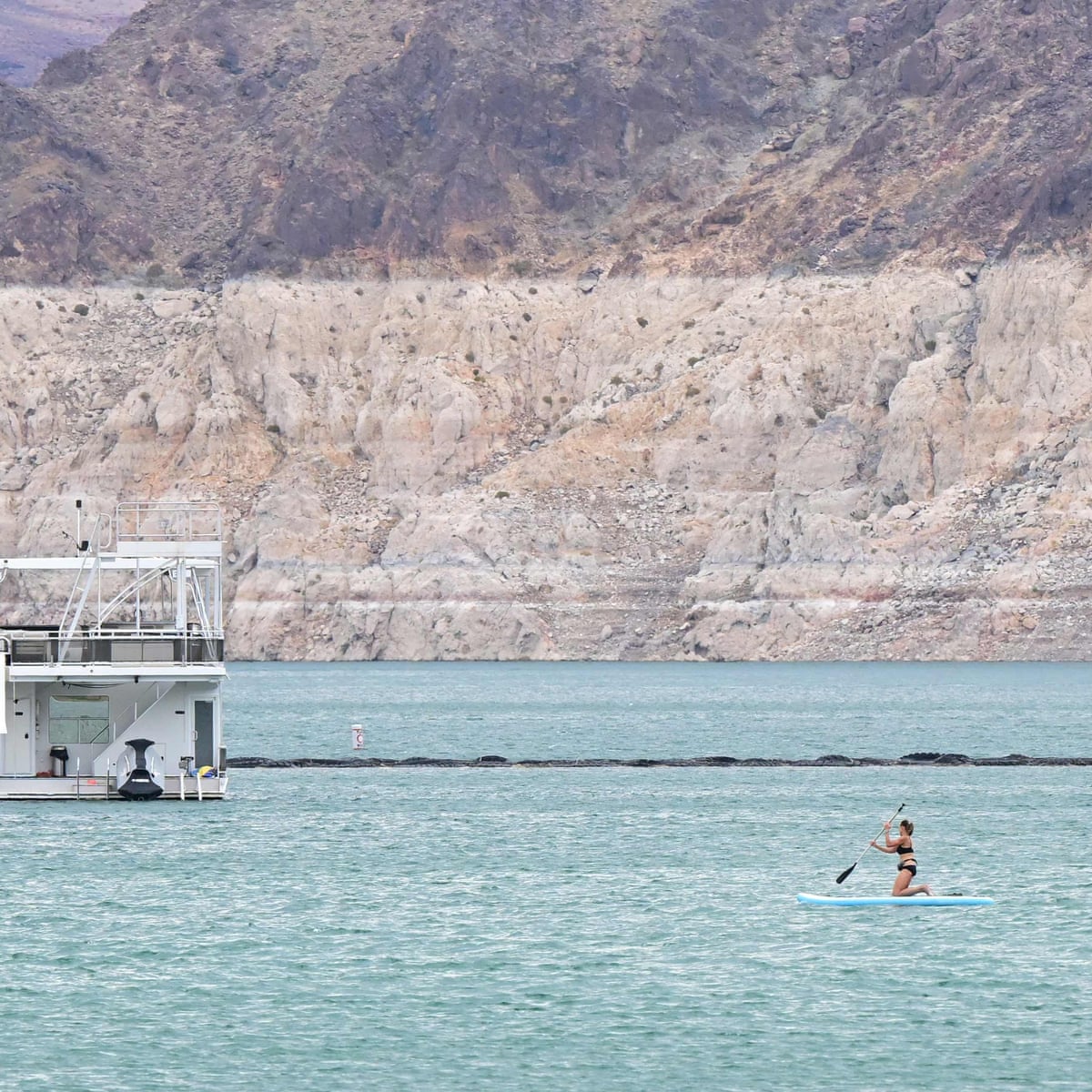
Witnessing Lake Mead’s declining depths sends a ripple of urgency through the heart of the Colorado River Basin. This water shortage isn’t just a localized predicament; it’s an alarm call across Arizona’s deserts and beyond.
At the epicenter, Hoover Dam stands as a monument to human ingenuity, but even this colossal structure can’t defy the strains of a thirsty river. The Colorado River, a lifeline for the river basin, now threads through the landscape with a silent plea for sustainable water management.
As drought tightens its grip, Lake Mead’s receding water unveils a series of cascading impacts. The river water, once a roaring force, now trudges along, a shadow of its former self. The Colorado River and its sprawling river basin, cradle a mosaic of ecological diversity and complex human needs. Within this vast watershed, every drop of water is accounted for, yet the scales are tipping towards scarcity.
Water quality, often overshadowed by quantity, emerges as a pressing concern. With lower volumes in Lake Mead, contaminants concentrate, threatening the delicate balance within the Colorado River ecosystem. Climate change whispers through the river basin, manifesting as irregular precipitation patterns and warmer temperatures, exacerbating the water shortage. Lake Mead, a barometer of the region’s health, signals distress as its water levels dip to unprecedented lows, compelling Arizona and its neighbors to confront harsh new realities.
Water management strategies once adequate are now put to the test. The Colorado River, which snakes through the Colorado River Basin, faces an arduous era. River water, a precious resource, requires judicious use. From opulent Las Vegas to sunbaked fields of the Southwest, the impacts of decreasing river water are unmistakable. It’s a domino effect; as Lake Mead’s water diminishes, so does the life force of the entire Colorado River and Lake Watershed.
Mead’s plight is more than a cautionary tale; it’s a microcosm of a global challenge. Drought, an unrelenting force, saps the vigor from the Colorado River, while stakeholders from various sectors grapple with the resulting impact. As the Hoover Dam’s reservoir shrinks, the harsh drumbeat of climate change grows louder, a testament to the pressing need for adaptive water management.
The Lake Mead watershed, now facing an uncertain future, depends on collaborative efforts to chart a course through these turbulent waters. The conversation isn’t complete without addressing the climate change that stokes the fires of water scarcity. It’s a confluence of factors, from the Colorado River trickling down arid canyons to the collective pulse of the river basin, that spotlights the urgent call for innovation and unity in the face of dwindling water resources.
Causes of Drought Affecting River Water in the Colorado River Basin
Nestled in the heart of the American West, the Colorado River Basin is a lifeline, sustaining ecosystems, cities, and agriculture across a vast arid region. Yet, this critical artery has been experiencing a persistent drought, which has severe implications for river water levels, particularly in Lake Mead – the largest reservoir in the United States by volume.
The causes intertwining to fashion this dire situation are manifold, with climate change standing at the forefront as a relentless driver of drier conditions and reduced snowpack in the Colorado Rockies, the lifeblood of the river basin. As temperatures rise, evaporation intensifies, further diminishing the already over-allocated water resources. Other Causes:
Lake Mead’s woes are a microcosm of the larger issues facing the entire Colorado River Basin. The watershed, which spans seven states and even crosses into Mexico, is feeling the impact of a thirsty civilization clashing with the diktats of a changing climate. As river water quality and quantity wane, the ecological and economic ramifications echo throughout the river basin, affecting millions.
Drought, a word that echoes ominously across Colorado and the arid regions it supports, has been exacerbated by the demands placed on this mightily stretched river. The reservoirs, struggling to balance the region’s water needs, teeter dangerously close to failing to meet their obligations, as Lake Mead’s water level are stark indicator of the crisis at hand. Beyond the grandeur of the scenic landscapes and the Colorado River’s banks, the watershed’s impact is palpable, with every drop of water a contested, precious commodity.
Colorado’s Water Crisis: Lake Mead’s Declining Levels and River Health Concerns
Colorado faces a water crisis manifested in the declining levels of Lake Mead and concerns over the health of the Colorado River. Prolonged drought exacerbated by climate change has led to diminished snowpack and reduced river flows, impacting the water supply for the state.
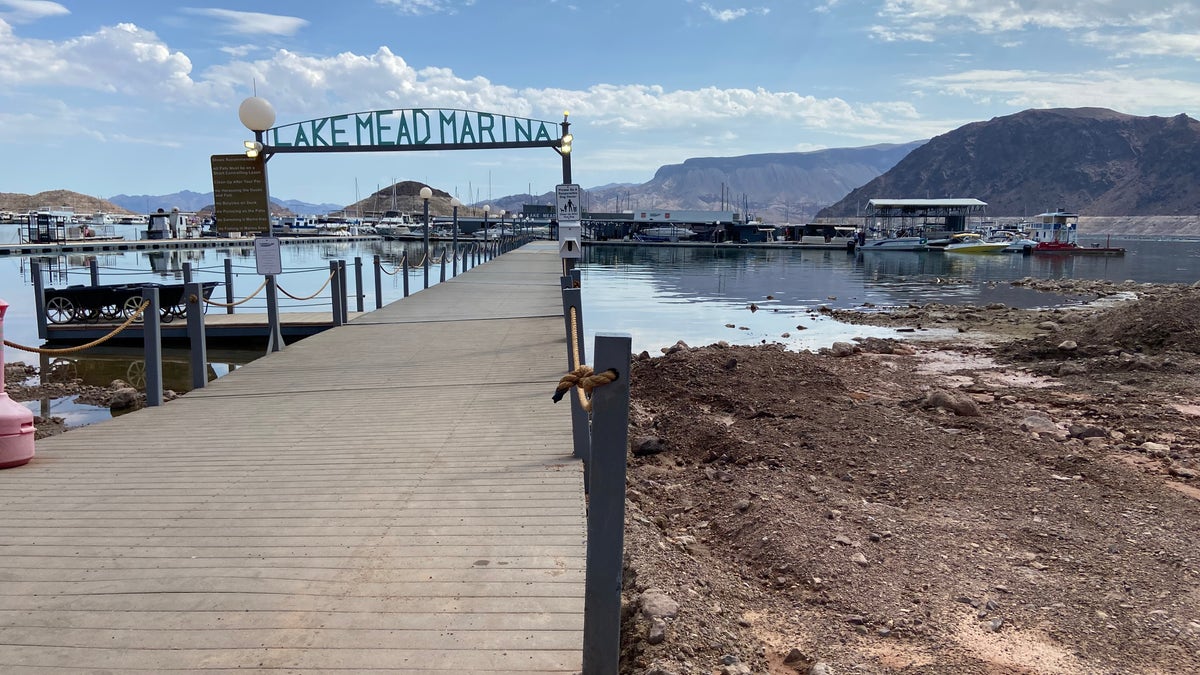
Lake Mead, a crucial reservoir for the southwestern U.S., is experiencing declining Lake Mead water levels, triggering water shortages that affect agriculture, hydropower generation, and urban areas. The stressed Colorado River faces challenges not only in sustaining its ecosystems but also in meeting the increasing water demands of a growing population and expanding industries.
This crisis underscores the need for comprehensive water management strategies, conservation measures, and a regional approach to address the interconnected challenges facing Colorado’s water resources.
In the heart of the American West, the Colorado River Basin unfolds as an intricate lifeline that conspicuously threads through arid lands, supplying precious river water to reservoirs, farmlands, and burgeoning communities. Within this basin, Lake Mead stands as a testament to human ingenuity but now also to crisis.
As the largest reservoir, Lake Mead’s declining levels paint a stark picture of the challenges that face the river basin’s water sources amidst climate change. Concerns over water quality and groundwater sustainability are escalating as the river’s health hangs in the balance, clouded by the uncertainty of a warming planet.
This intensifying scenario at Lake Mead, fueled by a complex interplay between demand and shrinking supplies, underscores the plight of the entire Colorado River. As levels fall, the word ‘crisis’ seems fitting, encapsulating the myriad of problems extending beyond the lake’s shoreline. The unprecedented loss of water in Lake Mead mirrors the river basin’s struggle, where the lifeline of the Southwest is compelled to contend with the harsh realities of climate change and its ripple effects across the region.
The Colorado River Basin is feeling the heat, as river water once abundant, now courses through the veins of the arid lands with less vigor. The basin’s declining water sustains Lake Mead, but the reservoir’s diminished capacity is a sign of the times—a barometer for the river basin’s overall health and sustainability. Climate change takes center stage as the culprit behind the heat that evaporates water, saps the vitality from the Colorado River, and lowers Lake Mead levels. The reservoirs, including Lake Mead, are not just pools of water but are barometers of a much broader environmental and societal dilemma.
From the river basin to its lakes, water loss has become more pronounced, with Lake Mead’s water plight illustrating the critical need for action concerning water management and conservation. It’s a dialogue that encompasses not only Lake Mead’s level but the whole state of the river basin’s health—the sinews that hold together the ecology and economies dependent on this river water. In Lake Mead’s shadows, the concerns once whispered are now discussed openly as the water’s declining trend rings alarm bells for the future of the Southwest.
Moreover, the ecosystem’s health and human prosperity are intrinsically tied to the stability of Lake Mead’s water levels and the broader Colorado River Basin. A reminder to us that water is not infinite. In the face of such loss, concerns amplify as river water becomes a symbol of both life and a crisis in waiting. The diminishing facade of Lake Mead confronts us with the pressing need to address climate change and salvage the river basin’s ongoing problems.
Exploring Solutions for Lake Mead and Colorado River Water Sustainability
Amid the declining levels of Lake Mead, stakeholders within the Colorado River Basin are pressing forward in their quest for solutions to assure the river water’s future. The once-mighty Colorado River, which meanders through the arid heart of Arizona and gifts life to Las Vegas, finds itself in dire need of sustainable water management strategies.
As the country grapples with a water crisis exacerbated by climate change, Lake Mead’s survival has become symbiotic with the health of the entire river basin’s ecosystem. Solutions include:
- Water Conservation Programs: Implement comprehensive water conservation initiatives across urban, agricultural, and industrial sectors to reduce overall water demand and promote efficient use.
- Improved Irrigation Practices: Encourage the adoption of modern and water-efficient irrigation methods in agriculture to optimize water usage and minimize waste.
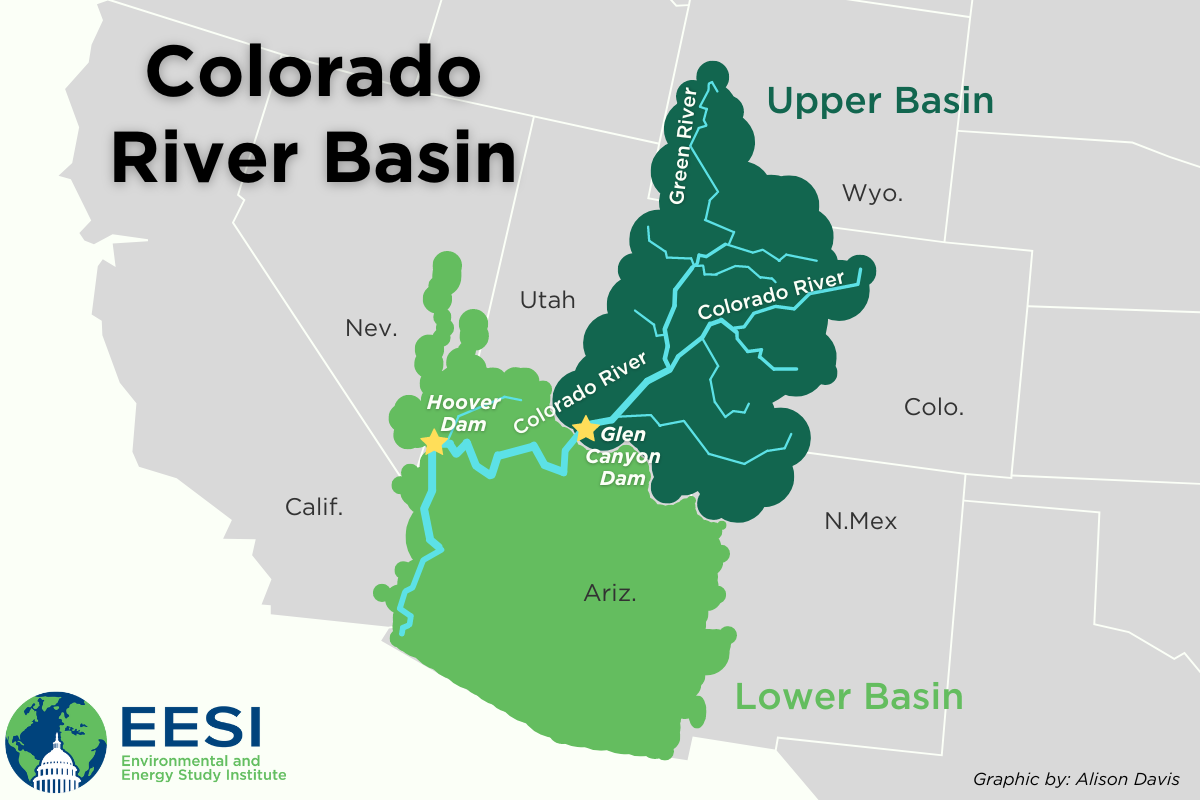
Colorado River Basin - Investment in Water Infrastructure: Upgrade and invest in water infrastructure projects, including reservoir management, wastewater treatment, and distribution systems, to enhance water storage and delivery efficiency.
- Drought Contingency Plans: Develop and implement robust drought contingency plans that include measures such as water-use restrictions, flexible water allocations, and collaborative efforts among states to manage water scarcity during drought periods.
- Adoption of Water-Saving Technologies: Promote the use of water-saving technologies, such as smart irrigation systems, to improve water efficiency in both agricultural and urban settings.
- Groundwater Management: Implement sustainable groundwater management practices to prevent over-extraction and depletion, ensuring the long-term health of aquifers in the Colorado River Basin.
- Ecosystem Restoration: Undertake ecosystem restoration projects to support the natural balance of the Colorado River, including measures to protect and enhance habitats, preserve riparian areas, and maintain biodiversity.
- Climate Change Mitigation: Support efforts to mitigate the impacts of climate change, including reducing greenhouse gas emissions, to address the underlying factors contributing to shifts in precipitation patterns and prolonged drought conditions.
- Public Awareness and Education: Raise public awareness about the importance of water conservation, sustainable practices, and the interconnectedness of water resources, fostering a culture of responsible water use.
- International Collaboration: Collaborate with neighboring states and countries sharing the Colorado River Basin to develop and implement joint strategies for sustainable water management, recognizing the transboundary nature of the river’s resources.
Threading the needle between conservation and demand, the Hoover Dam, once a symbol of American ingenuity, is today a stark reminder that even the grandest of reservoirs is not impervious to the natural variances of water supply. In light of this reality, we must delve deeper into the correlation between groundwater extraction and surface water dynamics, seeking balance, and understanding the climactic factors influencing the watershed.
Confronted with an unprecedented situation, researchers and policy-makers are honing in on forward-thinking water strategies designed to combat the aridification of such an essential American landscape. It’s not just about mitigating the water woes currently at hand; it’s about crafting a blueprint that will safeguard the reservoirs’ viability well into an uncertain future. For communities dependent on Lake Mead Watershed, such as those in Arizona, or the bustling city of Las Vegas, the need for actionable change is non-negotiable.
Future Outlook for the Colorado River Watershed and Lake Mead Reservoir
The future outlook for the Colorado River, Lake Mead Watershed, and reservoir remains challenging due to ongoing climate change, increasing water demand, and the persistent threat of prolonged drought. Projections suggest a continuation of reduced snowpack, higher temperatures, and altered precipitation patterns, contributing to heightened water scarcity in the region.
Sustainable water management practices, adaptation strategies, and collaborative efforts among stakeholders will be crucial to address these challenges and ensure the long-term resilience of the Colorado River watershed and the stability of Lake Mead’s water level.
Gazing at the vast expanse that is the Colorado River Basin, one’s eyes inevitably settle on the shimmering surface of Lake Mead. As we consider the future outlook of these interconnected natural monuments, a complex tapestry of environmental and political narratives unfolds.
Crucially pivotal to numerous states, the river’s water wends its way, a lifeline for communities and ecosystems alike. Lake Mead’s declining levels present a mirror, reflecting a dialogue that ripples from local to national arenas. Deeply woven into the fabric of the river basin’s story is the watershed, whose health is synonymous with the vitality of the Colorado River itself.
In the realm of river water management, the Colorado River Basin states have begun to recognize the serious situation of Lake Mead’s predicament. As water allocations are scrutinized, there lies a cautious optimism for its reservoir to one-day reach levels of fullness akin to its former glory.
River basins aside, Lake Mead’s future can’t be painted with a brush of simplicity. It’s a mosaic where every piece, from the watershed’s health to the basin’s water management strategies, must be carefully placed. The river and watershed not only sustain life but is the canvas upon which states project their water needs and environmental aspirations. Lake Mead Watershed has become a measuring stick for water sufficiency and, consequently, a focus for the future’s outlook.
Conversations surrounding the river, reservoir, and watershed grow more pressing as the word ‘shortage’ echoes across national headlines. Lake Mead, once a symbol of abundant natural reserves, now serves as a stark reminder of the finite nature of our precious water resources.
And so, Lake Mead watershed’s impact studies take on new weight, where Lake Mead’s reservoir and the Colorado River once again brims with potential. Examining every facet of the river basin’s contribution to Lake Mead’s water level is crucial for the future resilience of the Southwest.
The future of the Colorado River watershed and Lake Mead watershed and reservoir hangs in a delicate balance, swayed by each policy, every drop of precious water, and the collective will to foster a sustainable legacy for the generations that will tread this arid yet beautiful landscape.
References:
National Park Service- Overview of Lake Mead
Brookings-5 Facts on Lake Mead Water Crisis
FAQ’s
Q: What is Lake Mead and why is its water level a concern?
A: Lake Mead is a large reservoir formed by the Hoover Dam on the Colorado River, located in the Southwest United States. Its water level is a concern because it has been declining due to a prolonged drought in the region, over-usage of the river water, and climate change effects, posing risks to the water supply for millions, electricity generation, and the health of surrounding ecosystems.
Q: How does the water shortage at Lake Mead affect Las Vegas and the wider Colorado River Basin?
A: The shortage impacts Las Vegas by threatening its main water source and the functioning of the Hoover Dam, which supplies power. The wider river basin, which supports numerous communities and ecosystems, also suffers as lower water levels lead to increased water concentration of contaminants and an overall strain on water quality and availability.
Q: What role does climate change play in Lake Mead’s water crisis?
A: Climate change exacerbates the crisis by altering precipitation patterns, increasing temperatures, and therefore speeding up evaporation. It also contributes to reduced snowpack in the Colorado Rockies, which is a key source of the river basin’s water, leading to diminished inflows into Lake Mead.
Q: Are there any strategies in place to address the water shortage in the Colorado River Basin and Lake Mead?
A: Yes, stakeholders are considering various strategies, such as implementing more sustainable water management and consumption practices, advancing technology for water storage and recovery, and enhancing policies for more equitable water distribution. There’s also a push towards better understanding the relationship between groundwater extraction and surface water dynamics.
Q: What can individuals and communities do to help mitigate the water crisis in the Colorado River Basin?
A: Individuals and communities can adopt water-saving measures, support sustainable agricultural practices, promote conservation efforts, and engage in water policy advocacy. Embracing low-impact living and participating in community-wide discussions about water management can help reduce water usage and contribute to broader efforts in sustaining the river basin’s health.

